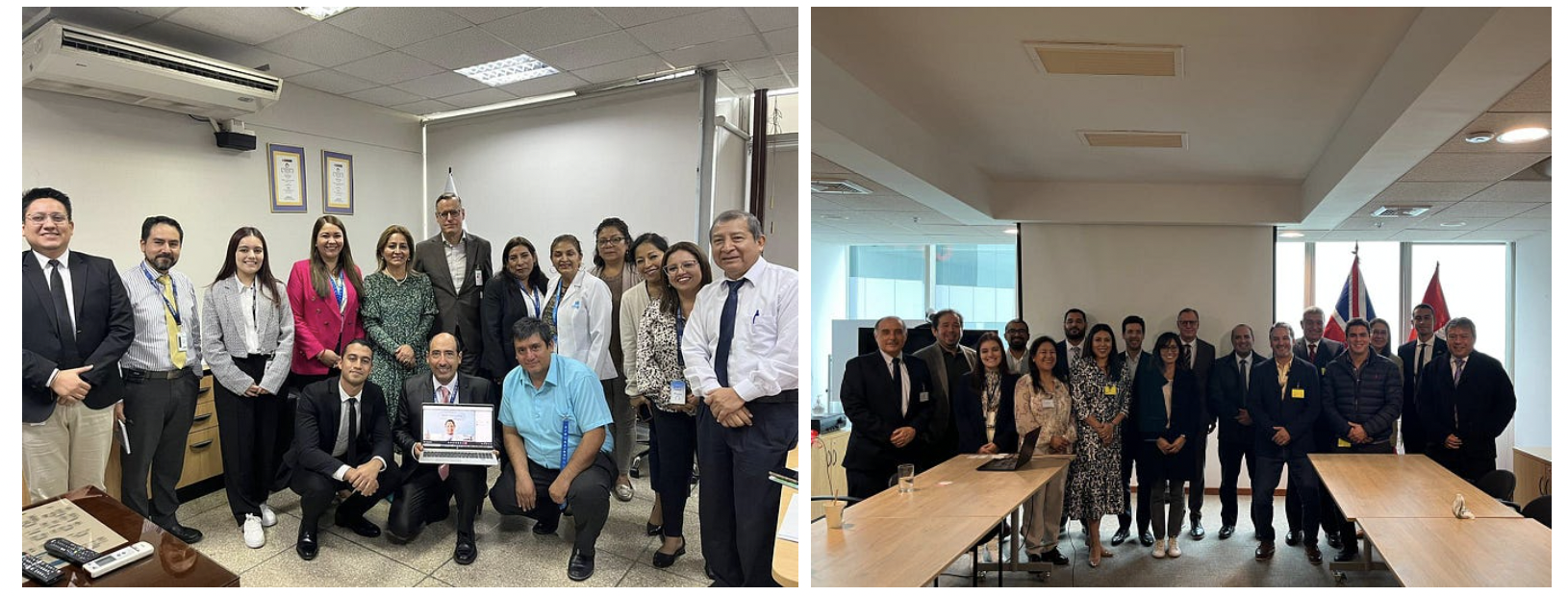Project EmpatIA: Innovating within the Peru Ecosystem
A blog by Alexis de Brouchoven, a Frontier Tech Hub Coach.
Explore learnings from our pilot, ‘EmpatIA — AI to enhance healthcare in remote areas of Peru'.
About Health Ecosystems
A healthcare ecosystem includes many stakeholders including healthcare providers such as hospitals and clinics, as well as patients, insurance companies, pharmaceutical companies, universities, pharmacies.
Healthcare ecosystems are complex and ever-changing. To improve healthcare, it is important first to understand the needs of each stakeholder and how they fit into the ecosystem. For example, patients need access to affordable and high-quality care, providers need to be able to deliver care efficiently and effectively, and insurance companies need to be able to control costs.
Avatr firstly aims to improve the connectivity of health ecosystems within countries, with a focus on the local context, such as supporting patients to eat well locally, and find local services to exercise, refill prescriptions on time and so on. Secondly, Avatr aims to bring about connectivity between the health ecosystems of countries, helping clinicians to work internationally, sharing best practices and learn from each other across borders.
Peru Health Ecosystem: In Focus
The Peru Healthcare ecosystem is similar to others around the world. It includes publicly funded health services such as EsSalud, a growing private healthcare provider system, leading pharmaceutical companies, insurance providers, and established universities. In Project EmpatIA, the research team seeks to engage this ecosystem to improve access to healthcare opportunities for at-risk groups of the Peruvian population. To achieve this, the project aims to co-develop Avatr AI technology use-cases that add value to the ecosystem and its stakeholders. Specifically, we aim to improve clinical outcomes, reduce costs, and improve quality of life for all.
We outline some of these activities below.
EmpatIA: In the Field
Dr Michael Wilkinson from Inavya spent one week in Lima to advance Project EmpatIA.
WHO WE MET
With support from the British Embassy in Peru (Rodrigo Acevedo & Andrea Cortez, right), Michael had a meeting with the British Ambassador to Peru, who is very supportive of the initiative. The team also met with AstraZeneca and GSK officials. In addition, the team also met with EsSalud, the Ministry of Health, and a group of 18 private healthcare providers, including SANNA and Clínica San Pablo.
WHAT WE LEARNT
We learnt that there is very strong interest across the whole healthcare ecosystem to participate in Project EmpatIA, but the focus will be different for each stakeholder as outlined below.
EsSalud provides healthcare to people within the formal economy. As part of its service offer, it is seeking to improve support for older patients who have access challenges, mainly due to limited mobility. In Project EmpatIA, the EsSalud clinical teams aim to develop an Avatr application focused on improving access to healthcare services for these patients. To get started, EsSalud has proposed co-development with three hospitals in Lima and one in the south of Peru.
The Ministry of Health both provides healthcare services, through specific networks, and emits regulation for all Peruvian healthcare institutions. They have expressed interest in learning from the experience of co-development with EsSalud as they wish to develop similar initiatives to further promote innovation within their offices.
For private healthcare providers, interest is particularly strong on the potential of Avatr to support patient engagement, reduce logistical costs of in-person appointments, and to provide added value to their existing services.
Finally, pharmaceutical companies have identified opportunities to provide further synergies to the healthcare ecosystem through their use of Avatr technology, such as improving the care pathway for patients who have asthma and need medication.
Through these activities, we have been able to map the existing health ecosystem in Peru. Within this content, we also learnt that some stakeholders will be able to engage more quickly than others. At some larger hospitals, we were able to meet with decision-makers and leaders with a strong focus on innovation and getting things done.
We learnt that access to healthcare is a challenge that can be overcome through digital technology even in urban areas where people still face barriers to accessing healthcare. Finally, we are getting more familiar with the regulatory framework, including the DIGEMID process and other processes. Good planning has also been important in order to achieve clearly defined objectives.
Following these visits, the Inavya team has been working closely with government officials to advance a number of important opportunities at pace. The Project EmpatIA team will shortly commence projects in a number of EsSalud Hospitals (below left) and in a number of private healthcare organisations (below right).
EmpatIA: Next Steps
To advance Project EmpatIA, the following next steps are planned:
The Inavya team will hold online meetings with stakeholders in Peru throughout July, in which the Inavya team will provide a demo of the Avatr technology and show existing ways of working with a range of hospitals on similar case-study projects. The Peru stakeholders will be encouraged to start to think about how to deploy Avatr resources to implement a case study for a Care Pathway of their choosing, with the aim to improve health outcomes and access.
During the visit, and in discussion with stakeholders, we have been able to identify their appetite to engage with Project EmpatIA and the benefits that they seek, as described above. Following consultation through a range of online meetings, the project team will hold a two-hour in-person meeting with the most interested stakeholders in Lima in early-mid August. At this in-person meeting, the team will work together with the Peru Health Ecosystem stakeholders to develop an innovative EmpatIA service in their chosen Care Pathway.
If you’d like to dig in further…
📚 Read about the pilot’s first Sprint and their three key phases — “Project EmpatIA Starts”
📚 Learn about the pilot’s local impact and global reach — “Project EmpatIA: Local Impact, Global Reach”



